
Saudi Arabia’s construction sector, valued at USD 97.8 billion in 2024 and projected to reach USD 135.6 billion by 2033, is expanding at an unprecedented pace. Mega-projects such as NEOM, the Red Sea Project, and Qiddiya are central to the Kingdom’s Vision 2030 strategy, reshaping infrastructure, tourism, and the broader economy.
This rapid growth has created intense demand for skilled labor, materials, equipment, and financial resources. For project managers, mastering resource management is no longer optional. It is the key to delivering projects on time, within budget, and at world-class standards.
In this guide, we will explore the importance of resource management, the biggest challenges facing construction leaders in Saudi Arabia, and how technology and financial planning can drive efficiency and success.
Construction resource management is the structured process of planning, allocating, and optimizing key project inputs, namely labor, materials, equipment, and finances, to ensure projects are delivered both efficiently and successfully. This extends well beyond simple task assignment or procurement; it embodies a strategic, holistic approach that aligns every resource with project goals.
Its primary objectives include:
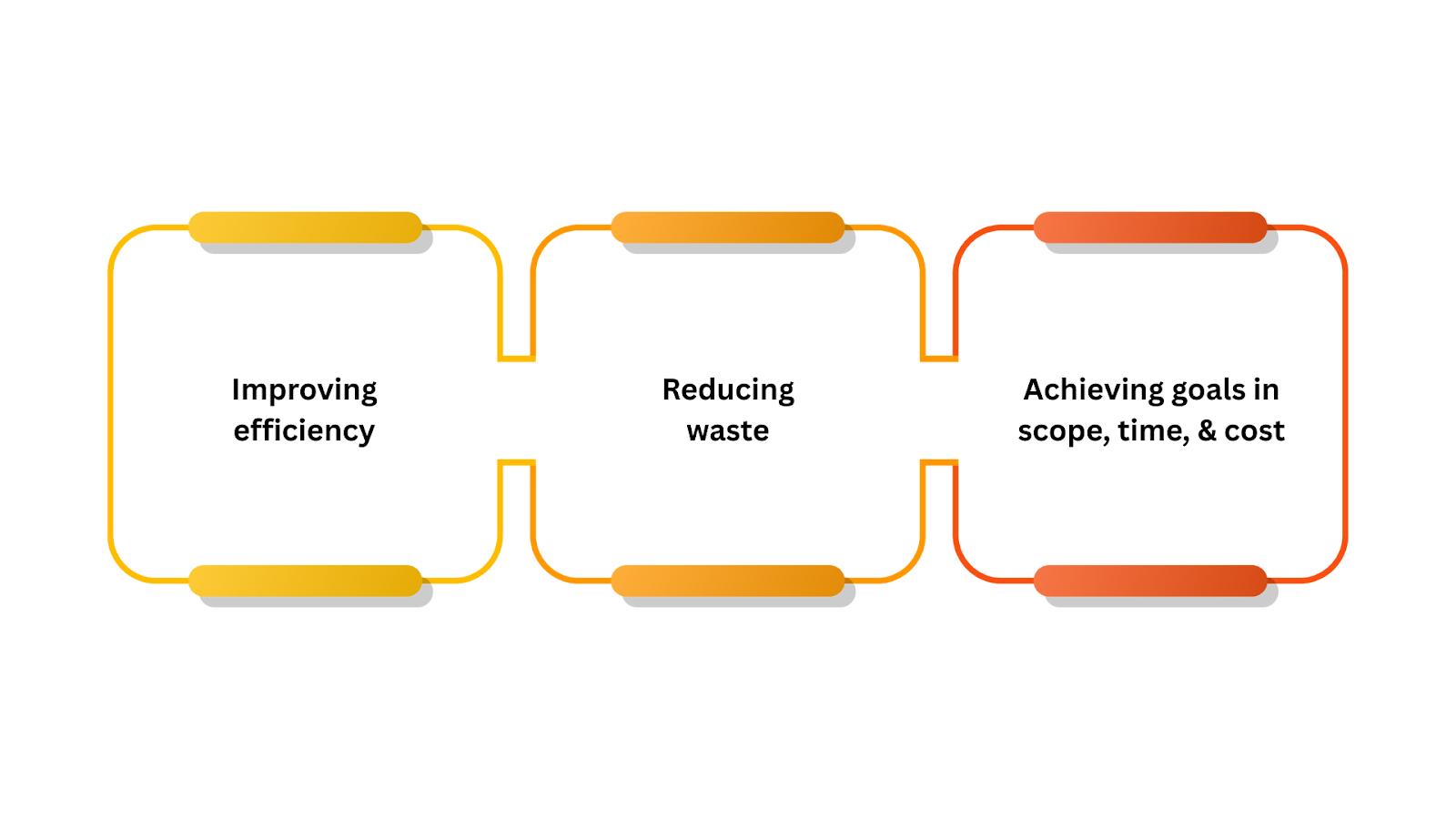
To achieve these objectives, construction resource management focuses on several key components that ensure resources are allocated and utilized effectively throughout the project lifecycle.
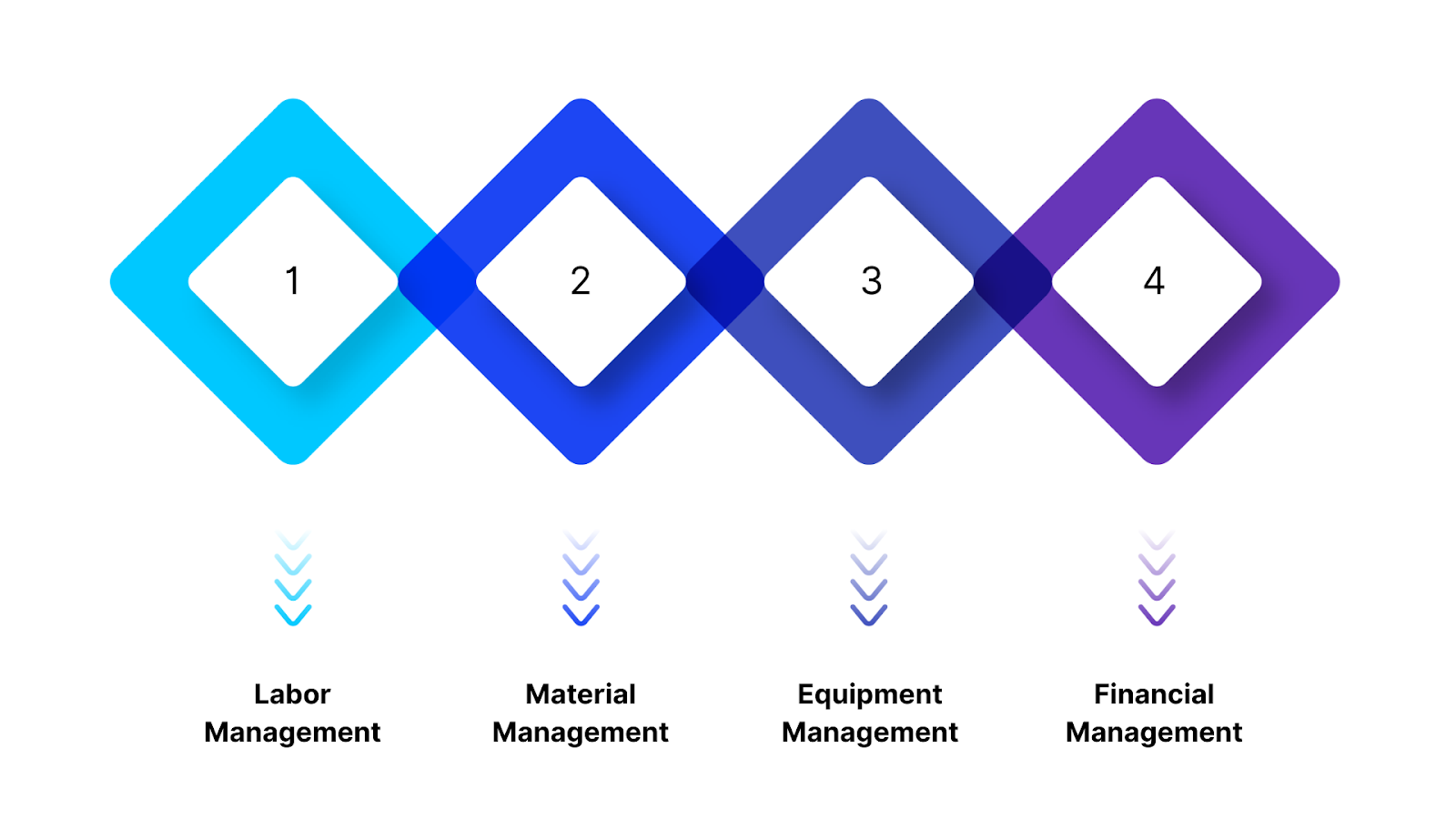
Saudi Arabia’s construction market is estimated at SAR 374.96 billion. It is ambitious, fast-moving, and highly regulated, all while operating under challenging environmental conditions.
To succeed, you need to master four key areas of resource management.
Labor is the backbone of every construction project. In Saudi Arabia, however, workforce management comes with specific challenges:
Without materials, even the most skilled labor sits idle. In Saudi Arabia, the scale of projects and complex supply chains makes material management particularly critical. Challenges include:
Heavy machinery and specialized equipment are indispensable in large-scale construction. But in Saudi Arabia, equipment management faces unique challenges:
Every project ultimately comes down to cost. Financial mismanagement is one of the leading causes of construction project failures worldwide. In Saudi Arabia’s competitive market, controlling budgets and ensuring profitability is non-negotiable.
Financial management includes:

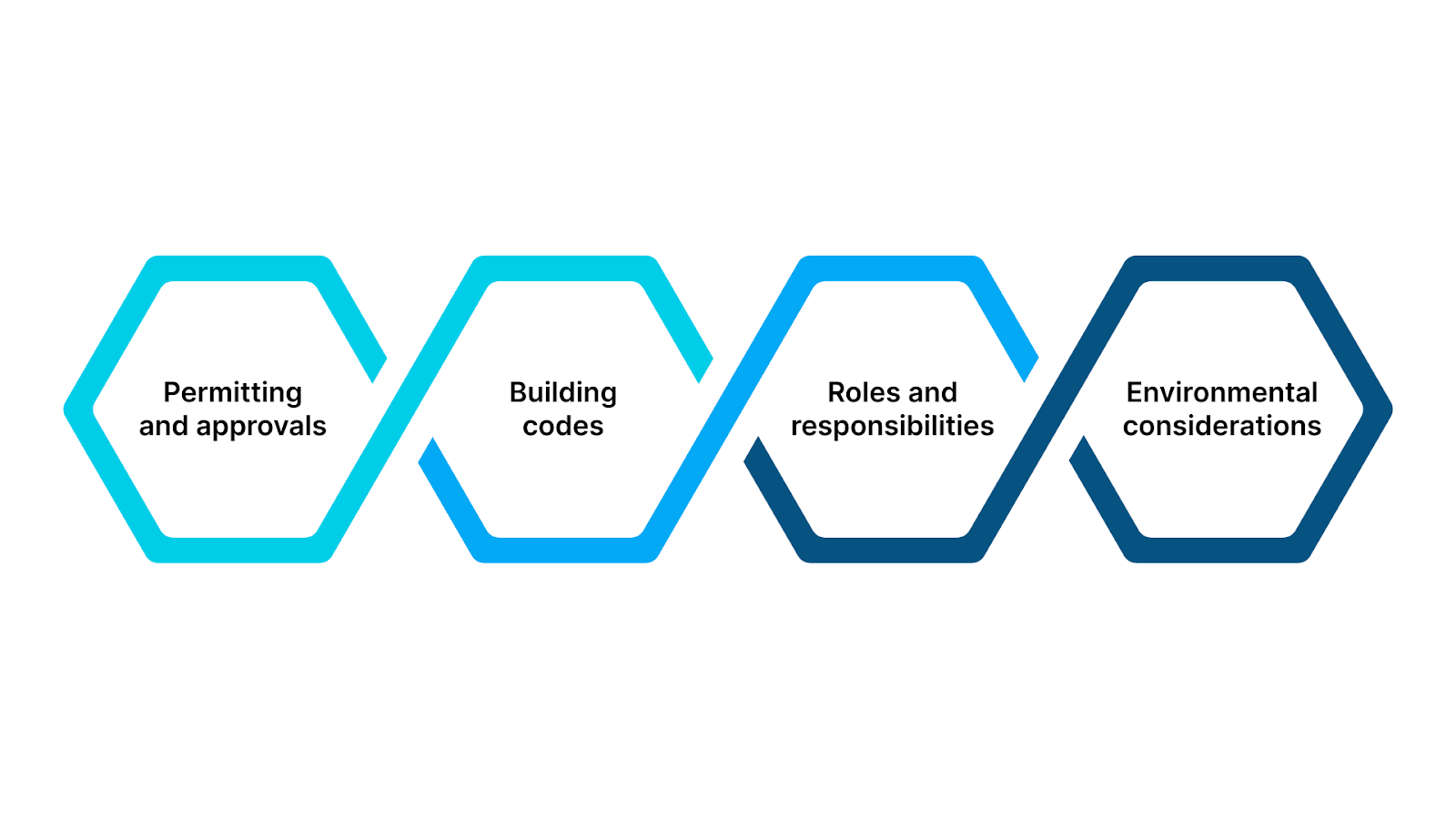
Saudi Arabia’s construction industry operates under a complex regulatory environment. From permitting and safety standards to labor requirements, compliance cannot be ignored.
Key factors include:
Saudi Arabia’s construction sector is undergoing a rapid digital transformation, driven by the ambitious scope of Vision 2030 projects and the Kingdom’s commitment to modernization. Traditional project management methods are no longer sufficient to handle the scale, complexity, and speed required in today’s environment.
To stay competitive, you must incorporate cutting-edge tools like Building Information Modeling (BIM), IoT-enabled monitoring devices, and cloud-based construction management software. These technologies are not only reshaping how projects are delivered but also setting new standards for efficiency, transparency, and collaboration across the industry.
HAL’s cloud construction management software integrates project scheduling, resource allocation, and cost control, ensuring agile decision-making and reducing miscommunication across contractors and consultants.
Lean construction focuses on minimizing waste and maximizing value, ensuring every resource, whether labor, materials, or equipment, is used as efficiently as possible. By streamlining workflows, enhancing coordination, and minimising inefficiencies, you can deliver projects more efficiently and at lower costs.
Material storage can quickly become a hidden cost, tying up capital and increasing the risk of waste or damage. A just-in-time delivery model ensures materials arrive precisely when needed, reducing onsite clutter and improving cash flow. In Saudi Arabia, where logistics and large-scale procurement can be complex, JIT provides a powerful way to keep projects agile.
With digital procurement and supplier management tools, HAL supports Just-in-Time (JIT) material delivery, minimizing storage costs and reducing onsite clutter, especially critical amid Saudi Arabia’s complex logistics landscape.
One of the greatest benefits of digitalization is visibility. From manpower attendance and equipment utilization to material deliveries and cost flows, digital tracking allows stakeholders at every level to monitor progress. This transparency reduces disputes, enhances trust, and ensures everyone, from consultants to contractors, works from a single source of truth.
HAL can provide you with digital resource tracking systems that offer comprehensive visibility, real-time monitoring of manpower attendance, equipment utilization, material receipts, and cost flow.
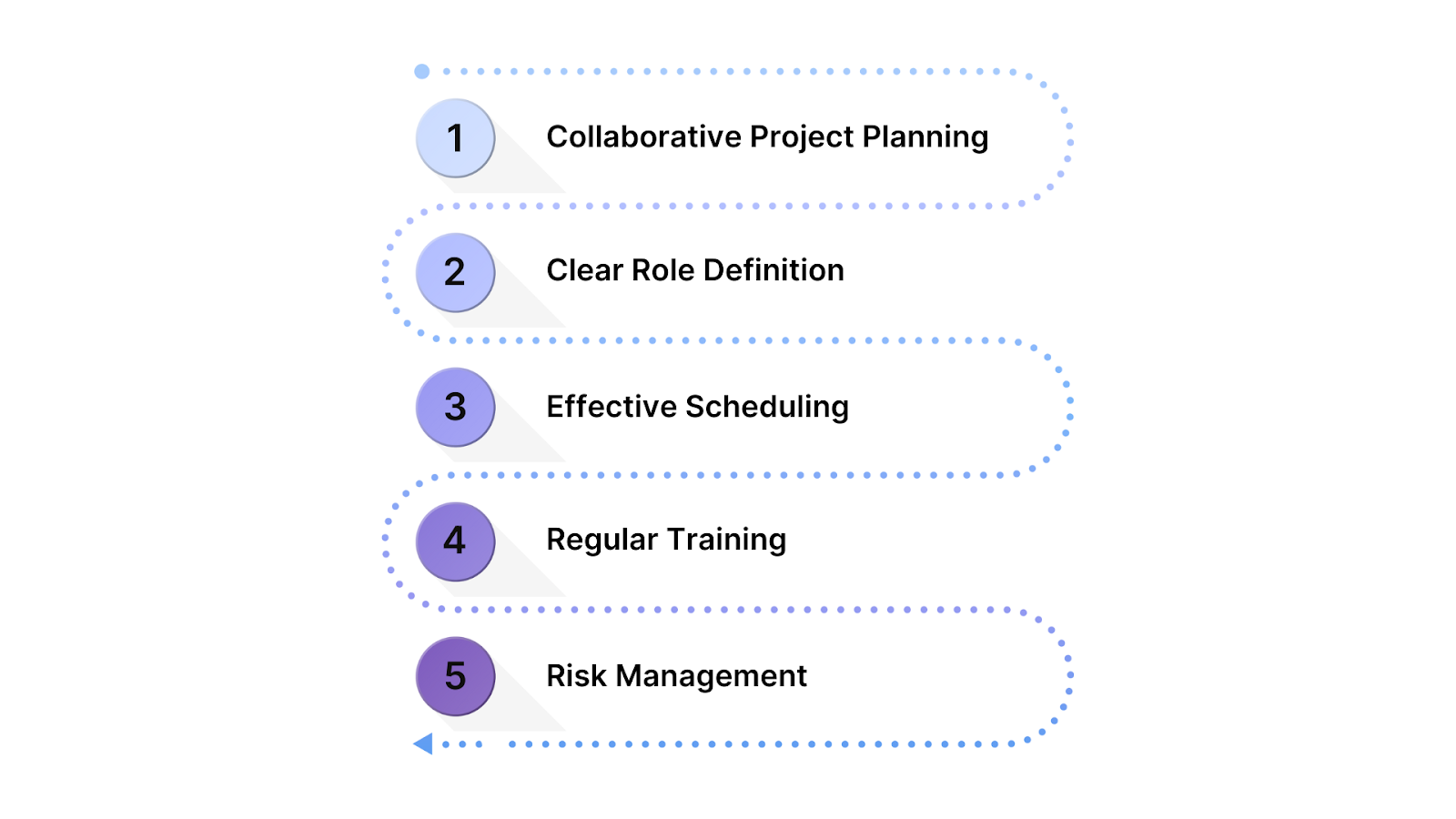
To thrive in Saudi Arabia’s fast-paced and highly competitive construction market, it’s not enough to just manage resources; it needs to be done strategically. The most successful projects are those that combine strong planning, efficient execution, and adaptability to unforeseen challenges. By embedding proven best practices into your operations, you can reduce risks, improve efficiency, and consistently deliver high-quality results.
The earlier you bring stakeholders together, employers, contractors, consultants, and suppliers, the smoother your project execution will be. Collaborative planning ensures alignment on scope, timeline, and budget before work begins, minimizing conflicts and misunderstandings down the road. Centralizing communication, documenting planning decisions, and ensuring everyone works toward shared objectives are key to success.
Confusion over roles and responsibilities is a common cause of project delays and disputes. Clearly defining the responsibilities of each party upfront avoids overlap and ensures accountability. Mapping responsibilities through transparent RACI matrices (Responsible, Accountable, Consulted, Informed) makes role clarity part of your project’s DNA.
Labor and equipment are among your most valuable resources, and poor scheduling can lead to costly downtime or bottlenecks. By creating detailed, realistic schedules that optimize manpower allocation and machinery usage, you can keep projects on track. Intuitive scheduling tools allow you to monitor progress in real time and adjust instantly when timelines shift.
A skilled workforce is critical for maintaining quality and compliance. In Saudi Arabia, where projects rely on both local and expatriate teams, regular training ensures everyone is up to date with regulations, safety requirements, and best practices. Tracking training schedules and certifications ensures your workforce remains competent, adaptable, and compliant.
Supply chain disruptions, regulatory hurdles, and climate challenges can threaten project success if not anticipated. Proactive risk management means identifying potential issues early and preparing contingency plans. Logging risks, assigning mitigation strategies, and setting up alerts help your team stay one step ahead.
To ensure a seamless project flow, it’s essential to be aware of common resource management pitfalls and actively implement solutions that address these challenges.
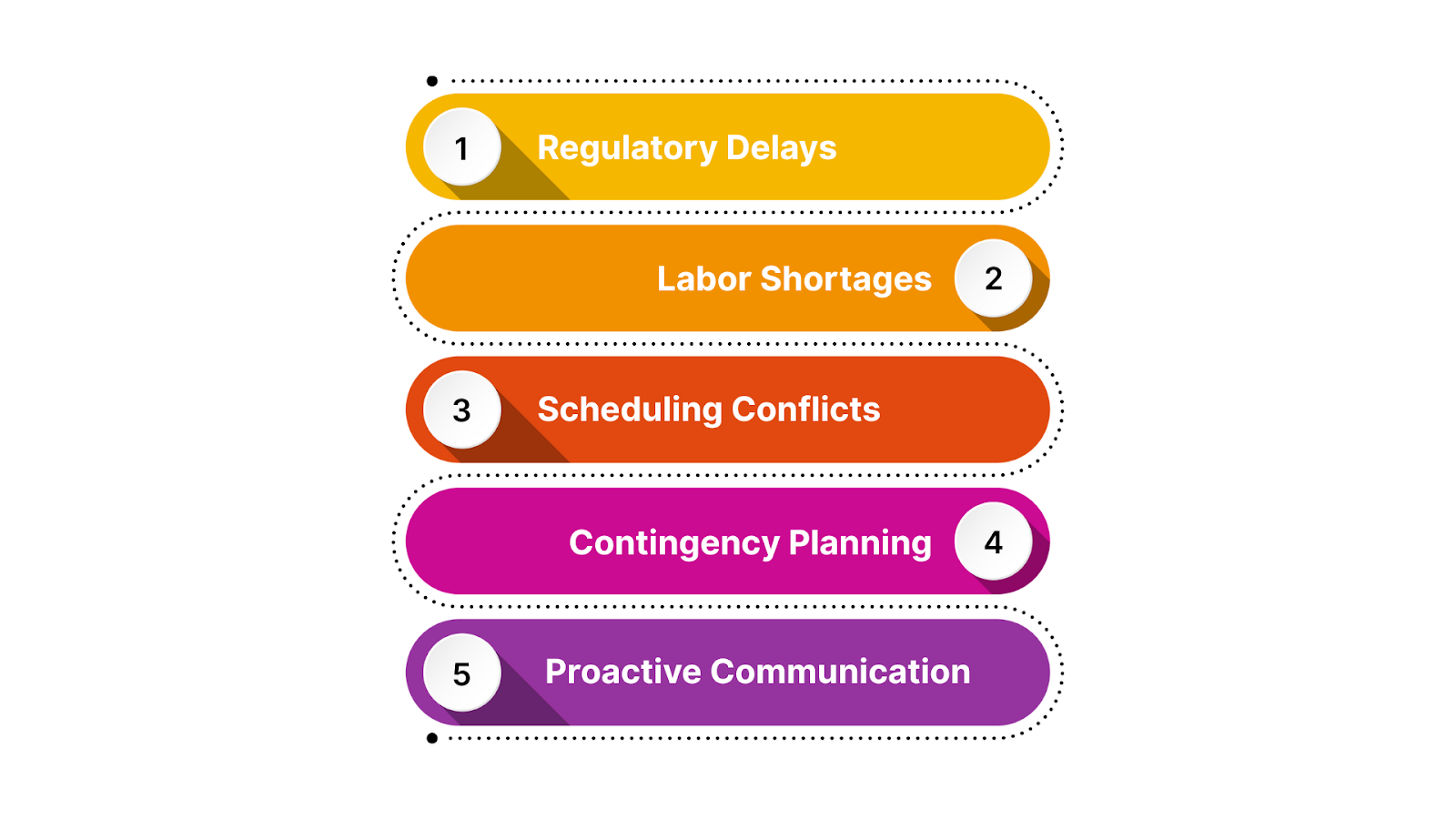
Even the most well-planned construction projects in Saudi Arabia can face unexpected challenges. The industry is shaped by regulatory requirements, workforce dynamics, and logistical complexities, all of which can disrupt timelines and budgets if not handled proactively.
Let’s explore some of the most common pitfalls and the solutions that can keep your project moving forward.
The Challenge: Navigating Saudi Arabia’s regulatory landscape is not always straightforward. Permitting and approval processes can take longer than anticipated, causing costly standstills in project execution. For mega-projects, compliance with multiple layers of national and municipal regulations only adds complexity.
The Solution: Develop a regulatory roadmap early in the planning phase, clearly outlining the permits, certifications, and inspections required. Build in buffer time for approvals and maintain open communication with government authorities.
The Challenge: Saudi Arabia’s construction workforce is heavily reliant on expatriates. Visa regulations, policy changes, or sudden worker shortages can disrupt manpower availability. In addition, the Kingdom’s drive to increase local employment (Saudization) adds another layer of workforce management challenges.
The Solution: Invest in workforce planning and training, with a balanced mix of expatriate expertise and local talent development. Always maintain a pool of pre-qualified labor suppliers to tap into when needed.
The Challenge: Poor scheduling often leads to bottlenecks, where equipment or teams are unavailable when needed. In large-scale Saudi projects, where multiple contractors work simultaneously, misaligned timelines can stall progress and increase costs.
The Solution: Adopt dynamic scheduling techniques that consider dependencies between labor, equipment, and materials. Use real-time project tracking to spot clashes before they occur.
The Challenge: Unforeseen risks, whether weather disruptions, supply chain breakdowns, or sudden regulatory shifts, are inevitable in Saudi Arabia’s ambitious construction sector. Without contingency measures, small delays can snowball into major setbacks.
The Solution: Always prepare backup plans for critical resources, materials, and timelines. Factor in contingency costs from the beginning.
The Challenge: Miscommunication between stakeholders, employers, contractors, consultants, and suppliers remains one of the most frequent causes of rework, disputes, and inefficiencies in Saudi projects.
The Solution: Establish transparent communication channels from the start. Regular updates, clear reporting structures, and collaborative platforms prevent misunderstandings.
By recognizing these pitfalls and proactively applying solutions, you can keep projects resilient, efficient, and profitable.
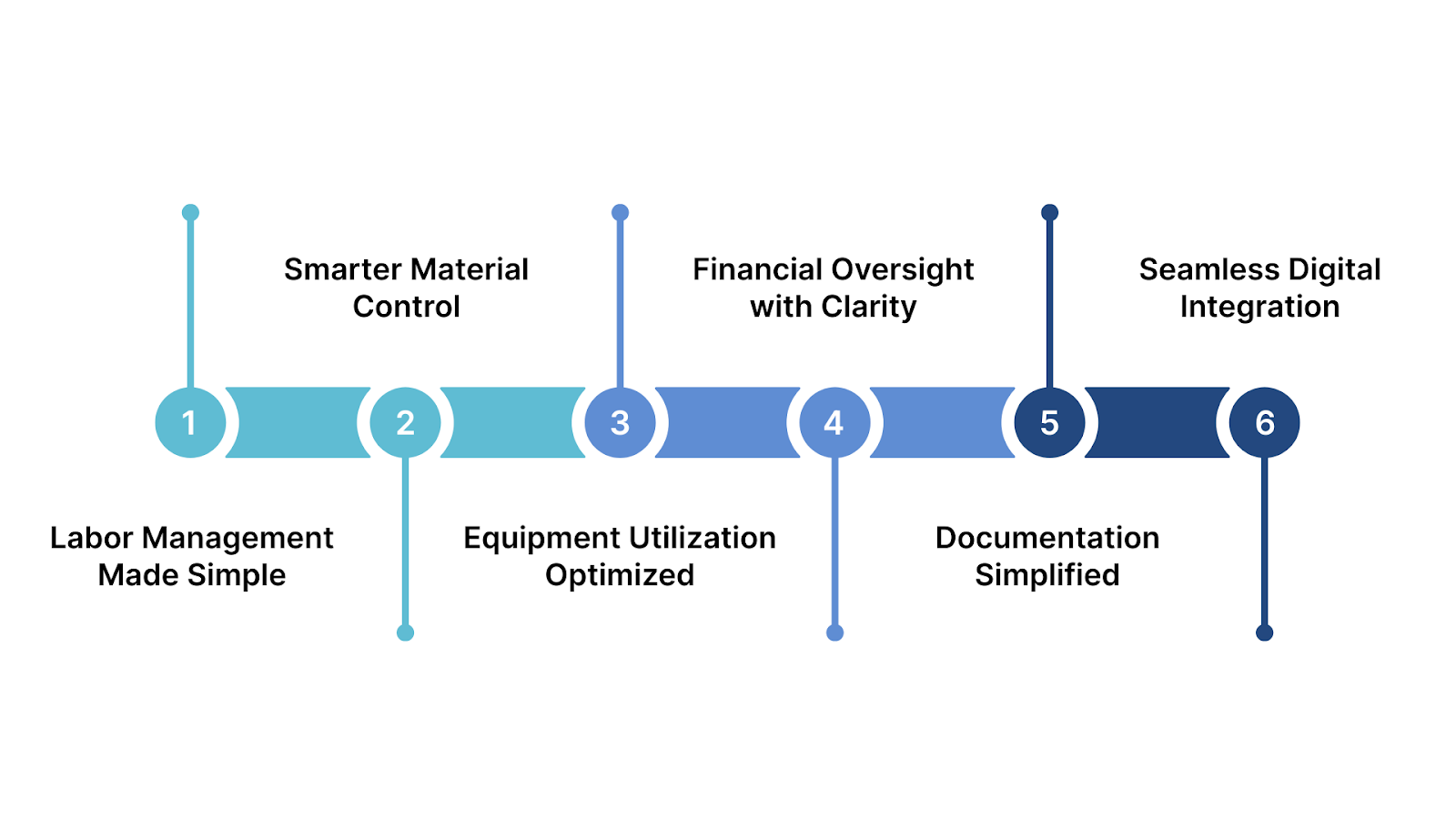
Saudi Arabia’s construction industry requires agility, foresight, and precision. HAL is built to meet these exact needs, helping companies simplify complexity while staying compliant, efficient, and competitive. Here’s how:
Join 50+ Saudi construction companies already using HAL ERP to streamline revenue calculation, automate compliance, and improve project management.

The construction scene in Saudi Arabia is changing fast under Vision 2030, pushing for bigger scale, higher efficiency, and smarter digital tools. From BIM and IoT to cloud management and Just-in-Time delivery, adopting the right technology is key to cutting waste, managing resources, and keeping projects transparent.
HAL’s ERP makes this shift simple. Built for construction, it integrates scheduling, budgeting, procurement, resource tracking, and cost control into a single platform. With real-time data and digital procurement tools, teams can make quick decisions, collaborate better, and cut costs across projects.
Choose HAL today and get the edge you need to deliver smarter, faster, and more efficient construction projects in Saudi Arabia.
Q. Why is resource management so important in Saudi Arabia’s construction sector?
Saudi Arabia’s construction market is ambitious, fast-moving, and highly regulated. Effective resource management covering labor, materials, equipment, and finances ensures projects are completed on time, within budget, and in compliance with local standards.
Q. How do labor challenges impact construction projects in Saudi Arabia?
The reliance on expatriate workers and Saudization requirements can lead to workforce shortages or delays. Managing these challenges requires effective planning, training, and the development of local talent to ensure smooth project execution.
Q. What are the main obstacles in material management for Saudi projects?
Material procurement delays, logistics complexities, and compliance with Saudi building codes can affect project timelines. A proactive approach to sourcing and inventory management is essential to avoid these challenges.
Q. How can equipment management be optimized in Saudi Arabia’s harsh climate?
The harsh weather conditions, including heat and sandstorms, require proactive maintenance and efficient allocation of machinery. Implementing predictive maintenance and dynamic scheduling can help minimize downtime and enhance equipment utilization.
Q. What strategies help avoid cost overruns in Saudi construction projects?
Implementing realistic budgeting, tracking costs in real-time, and using digital tools for monitoring progress help prevent budget overruns. Including contingency costs and maintaining proactive communication across teams can also mitigate risks.